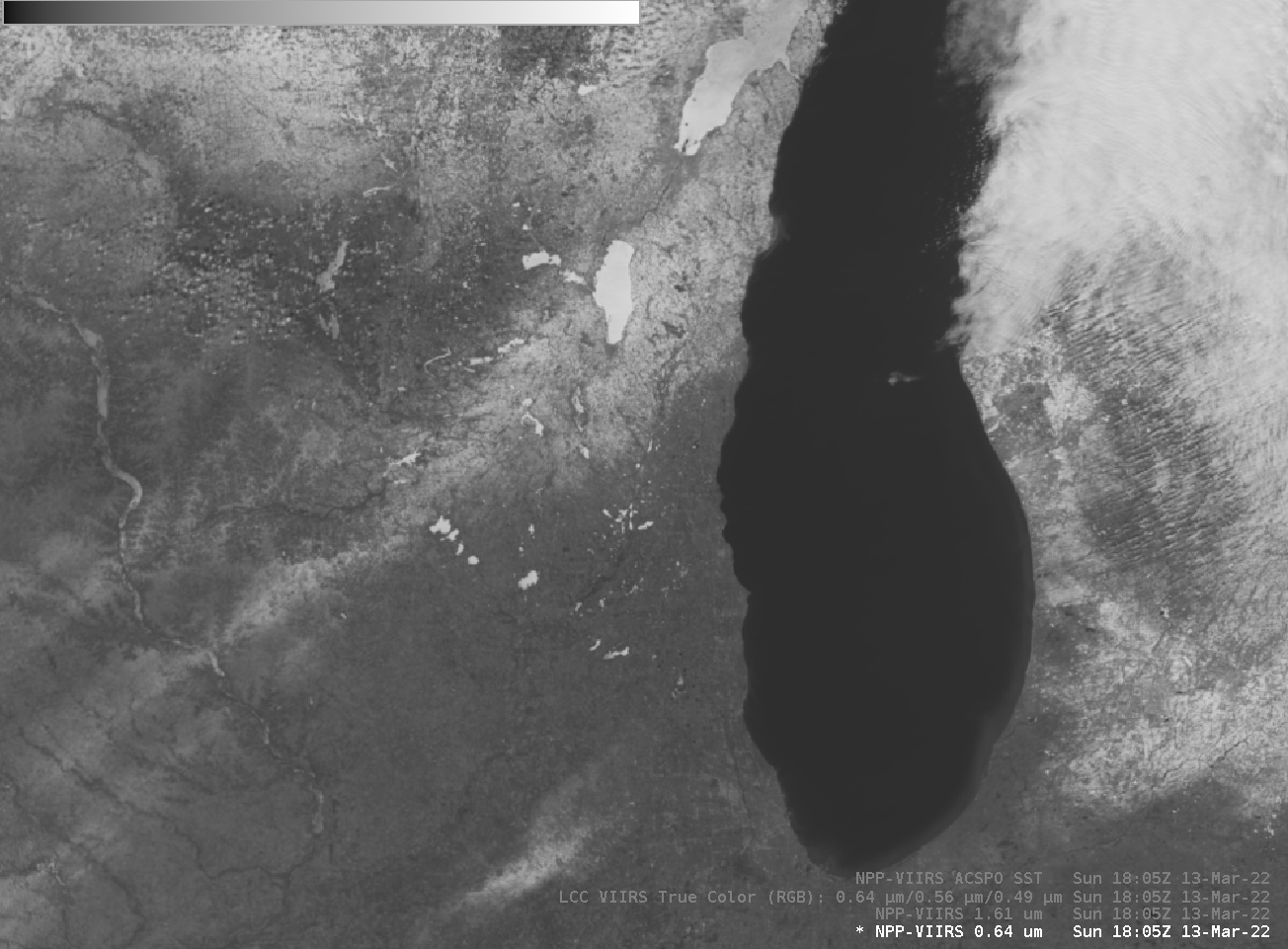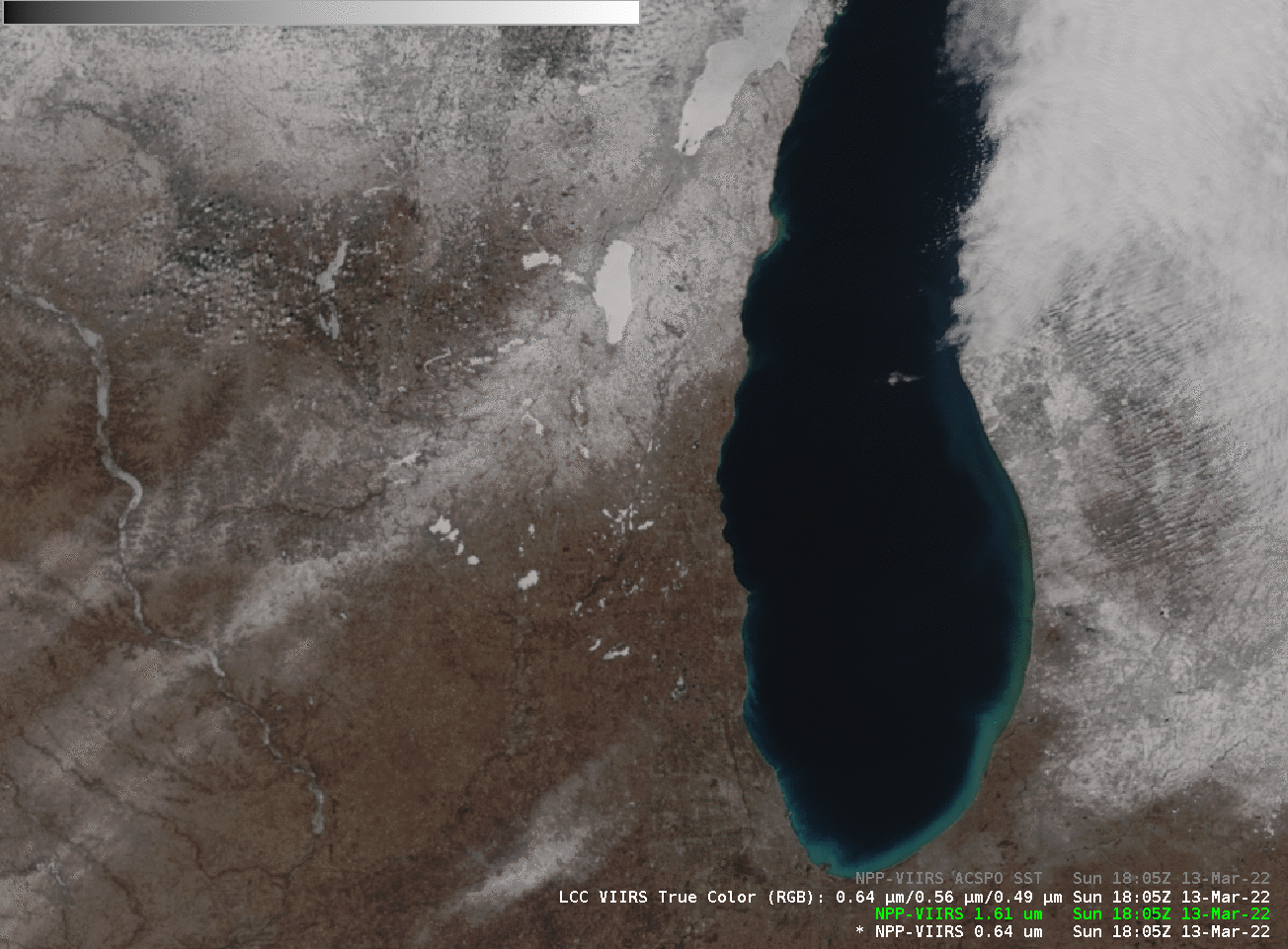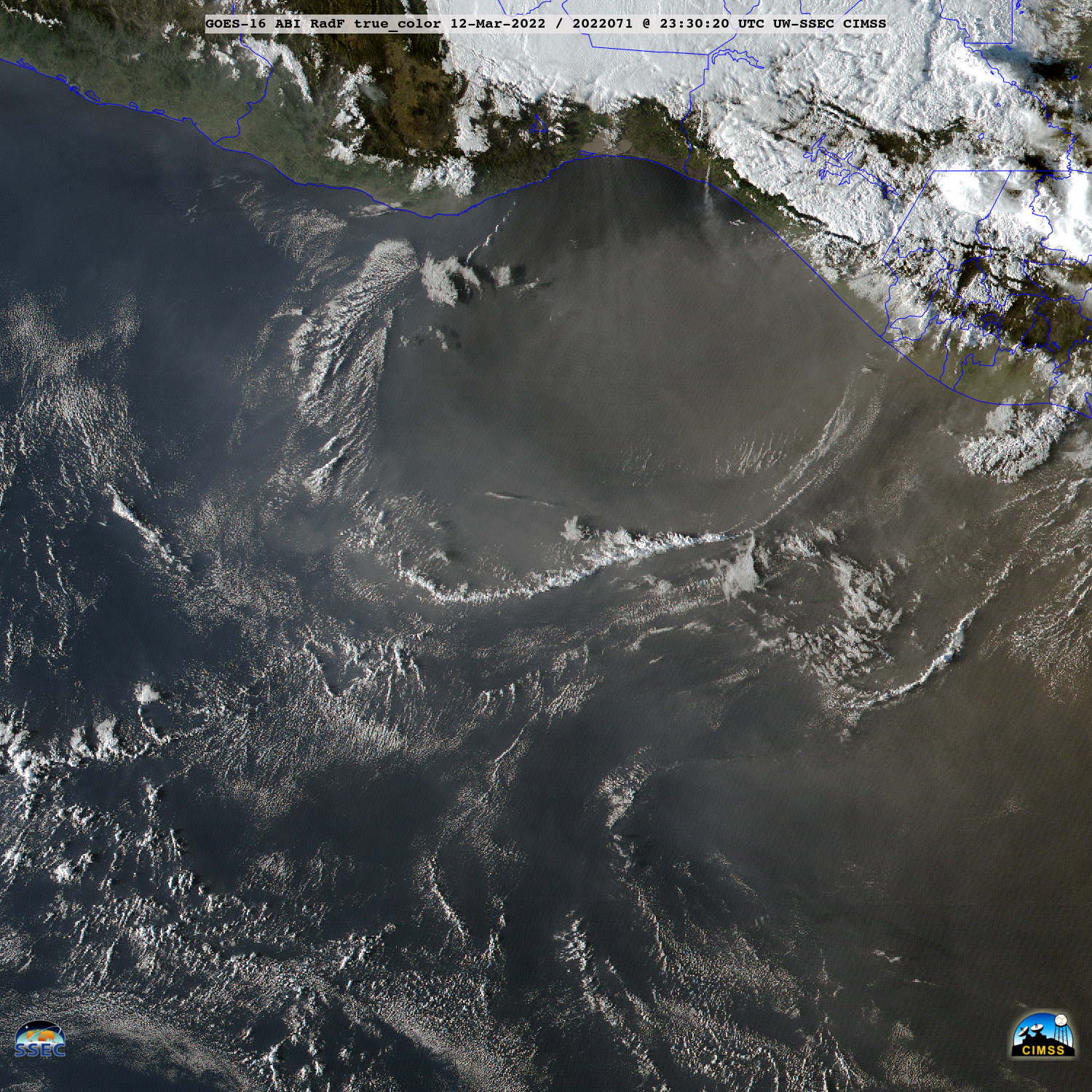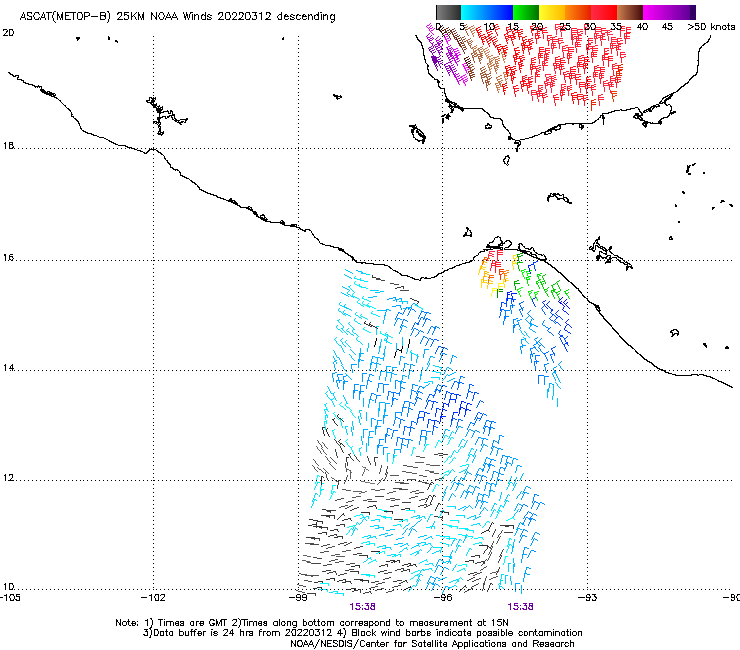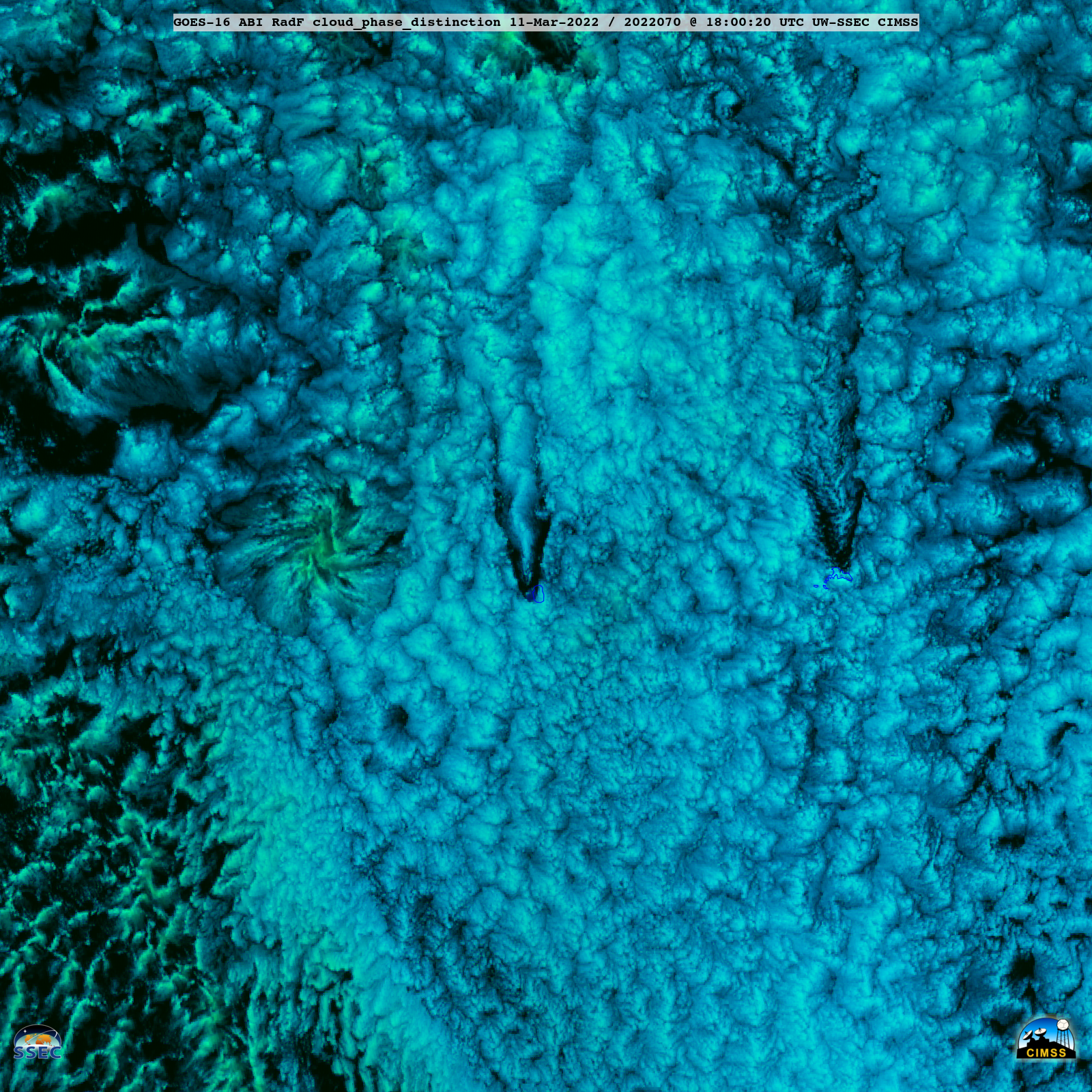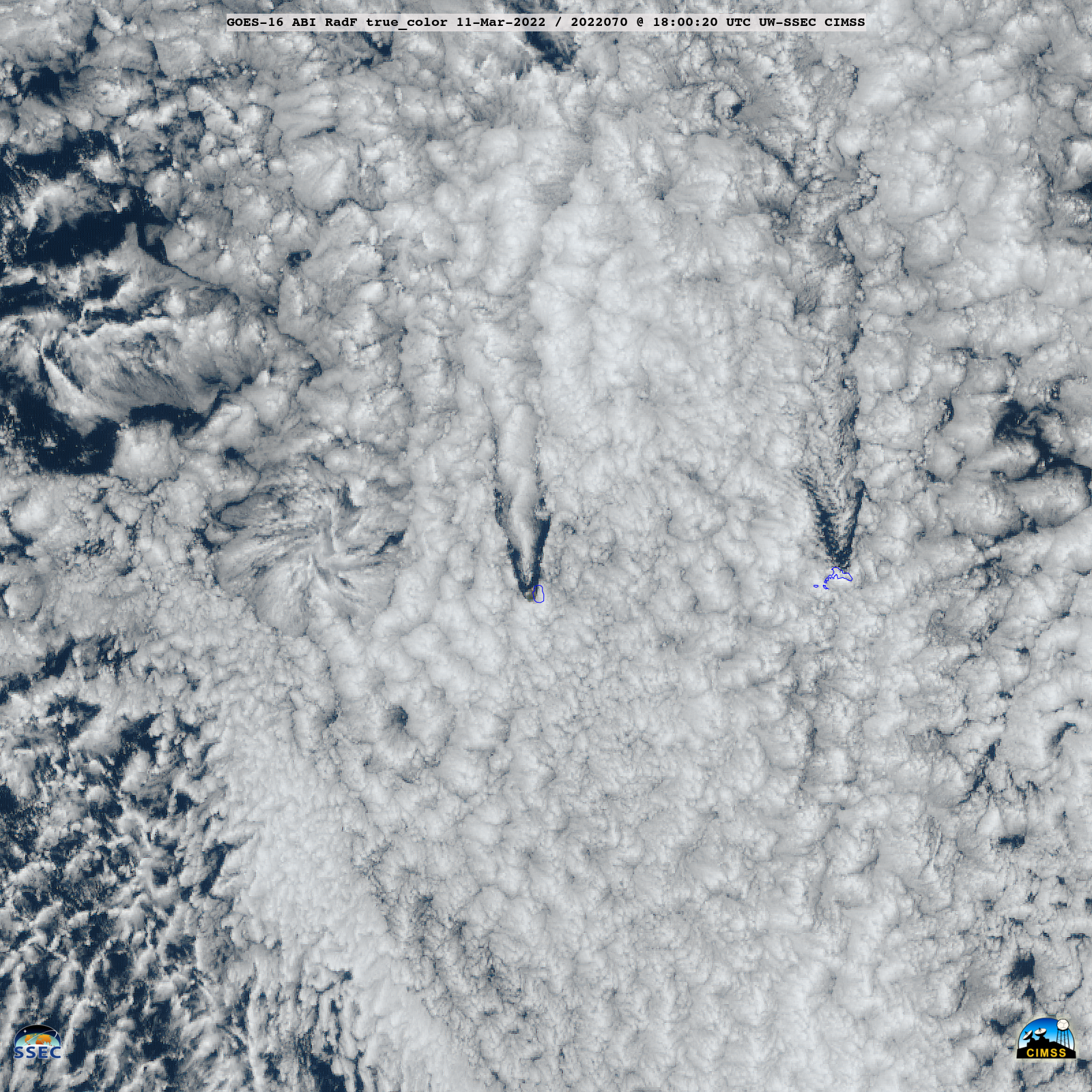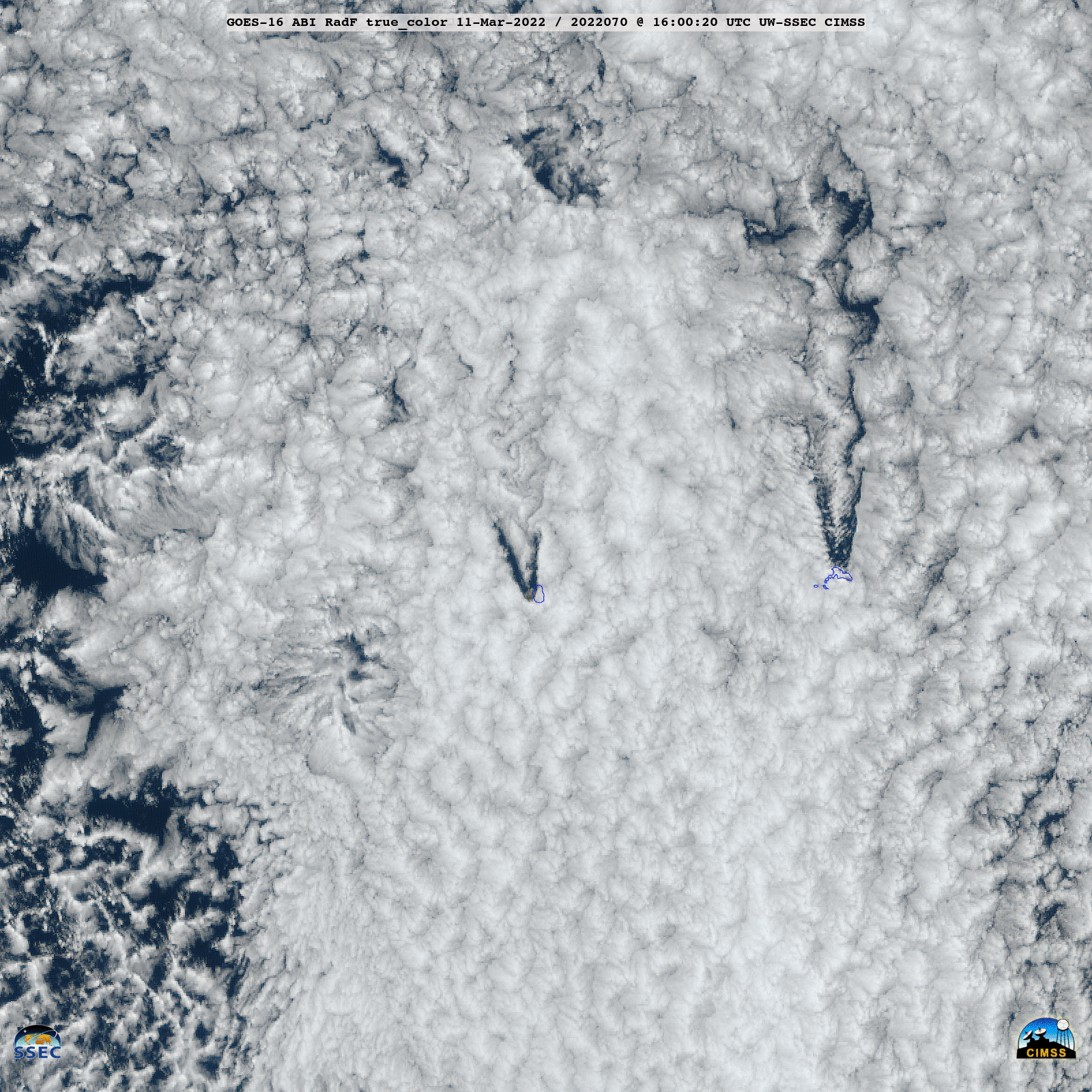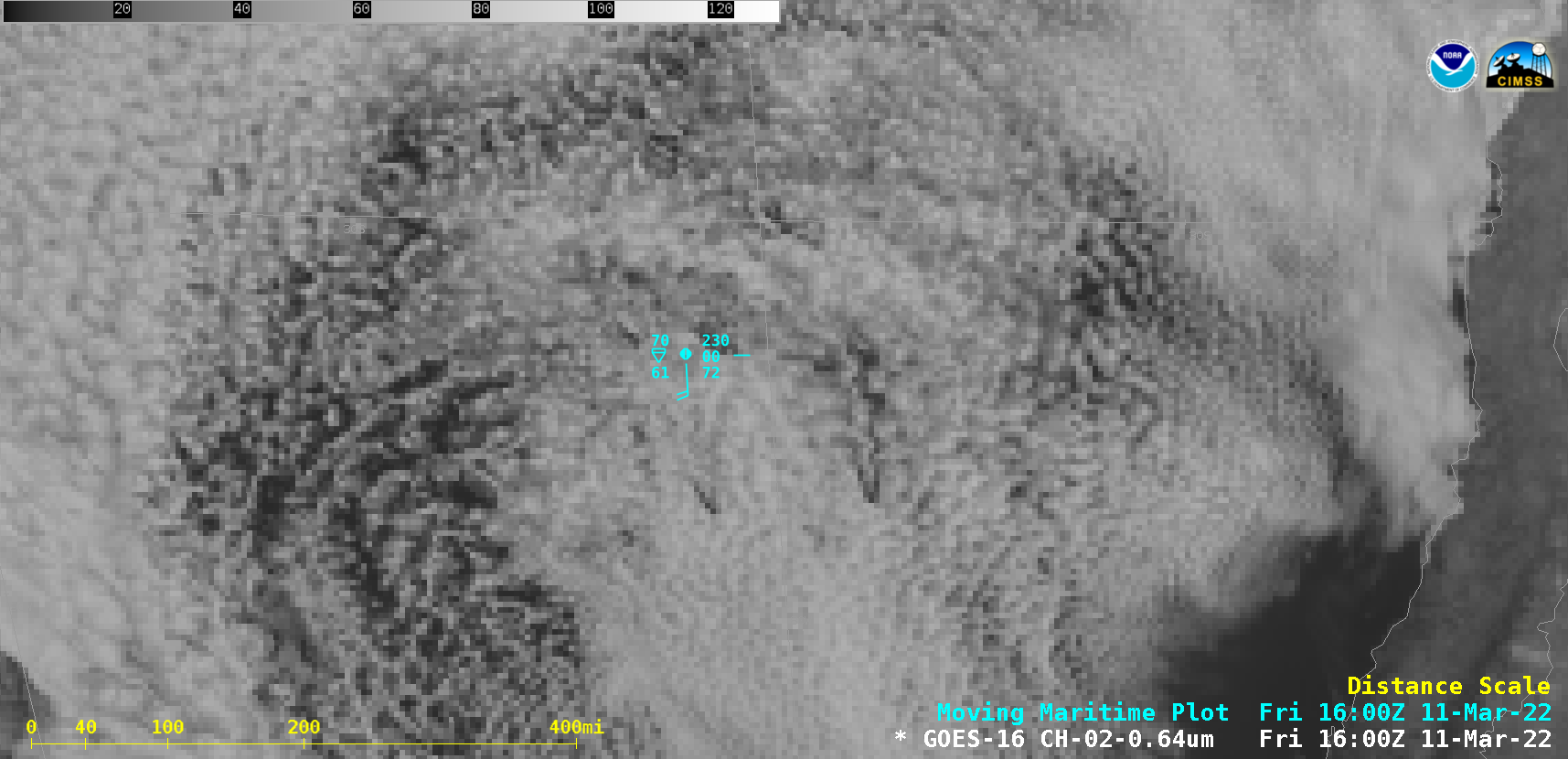
Strong surface tradewinds over Guam, and the dry season over Guam, combined on 14 March to allow short-lived wildfires. The shortwave-infrared imagery above, color-enhanced so white pixels are warmest, shows occasional flare-ups over the southern half of the island between 2200 and 0400 UTC, and then again closer to 0600 UTC over central Guam (Note also how the island warms up — becomes whiter in the color enhancement used — during the day).
How strong were the surface winds that fanned the flames? ASCAT imagery from Metop-B, shown below at (shown during the day with visible imagery) shows surface winds around 15-20 knots.

Sequential visible images can also be used to estimate wind speeds. The toggle below shows visible imagery between 0310 and 0320 UTC on 14 March. The cloud line over southern Guam moving west-southwestward towards the surrounding ocean moves about 4 nautical miles in the 10 minutes: at about 25 knots (latitude/longitude point distance separation can be computed here).
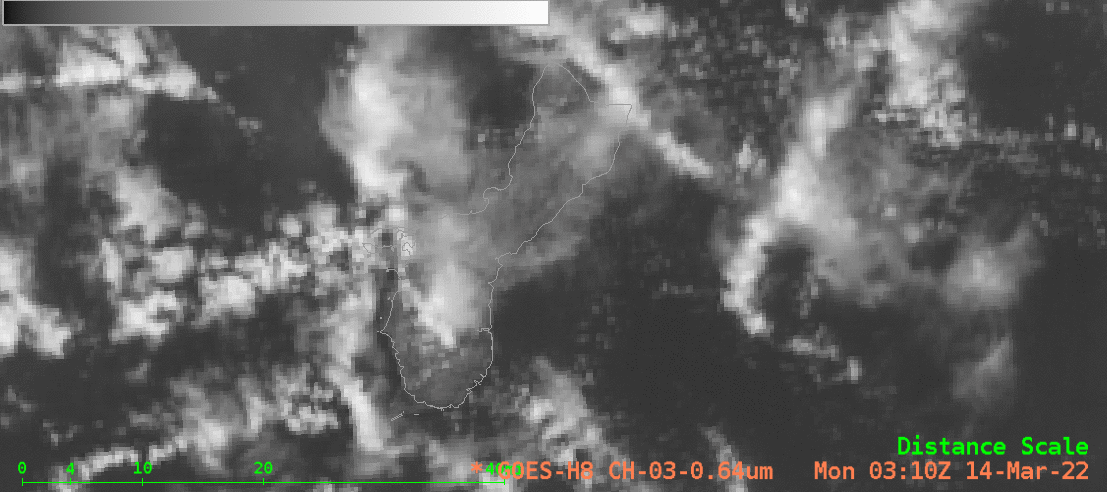
The strong winds allowed for occasional flareups. Consider the animation below between 0610 and 0630 UTC of the shortwave infrared (3.89 µm) imagery. An obvious hot spot (in white) is present at 0610 and 0620 UTC, but at 0630 UTC it has either been extinguished, or it’s been covered by clouds (or both!)

Himawari-8 Level 2 products diagnose fire hot spots, and are available from this website. A hotspot is diagnosed at 0600, 0610 and 0620 UTC on 14 March (no hotspot was diagnosed at 0630 UTC). Work is ongoing to get this level 2 Product (and others, such as derived motion wind vectors) into AWIPS.
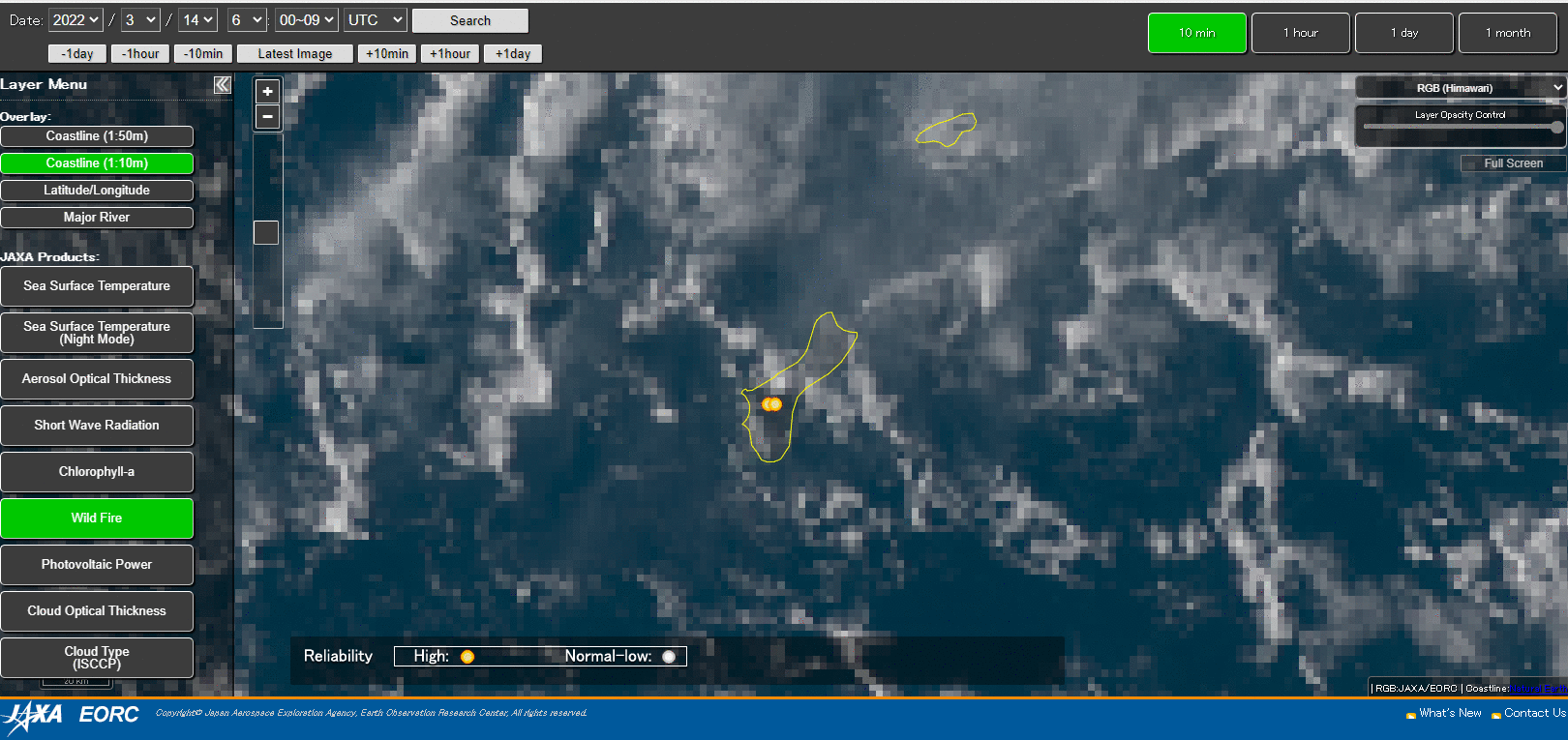
AWIPS imagery in this post was created using the NOAA/NESDIS TOWR-S AWIPS in the cloud instance.
Brandon Bukunt, WFO GUM, supplied the VIIRS shortwave infrared (3.74 µm) imagery (from data downloaded from the Direct Broadcast antenna at the office, and processed with CSPP Software) below. Three wildfires are circled. Note the brightness temperature of 63 C over southern Guam!
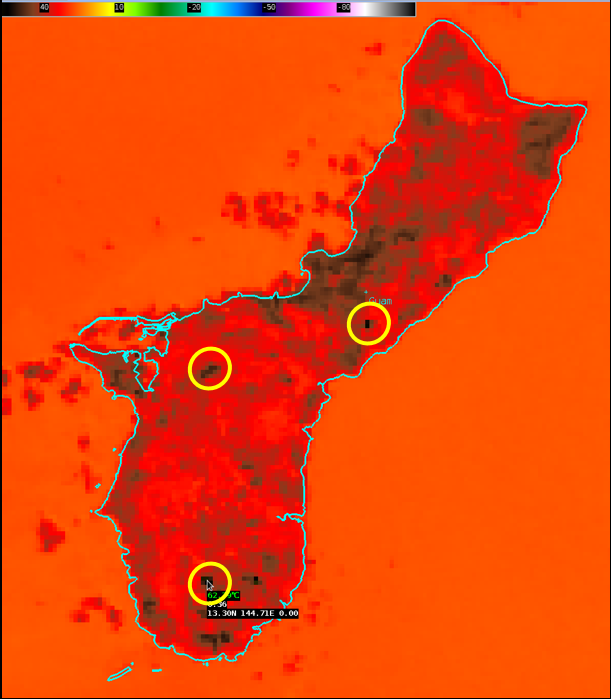
The photograph below (courtesy Eric Lau) from a plane landing at Guam shows fires burning.
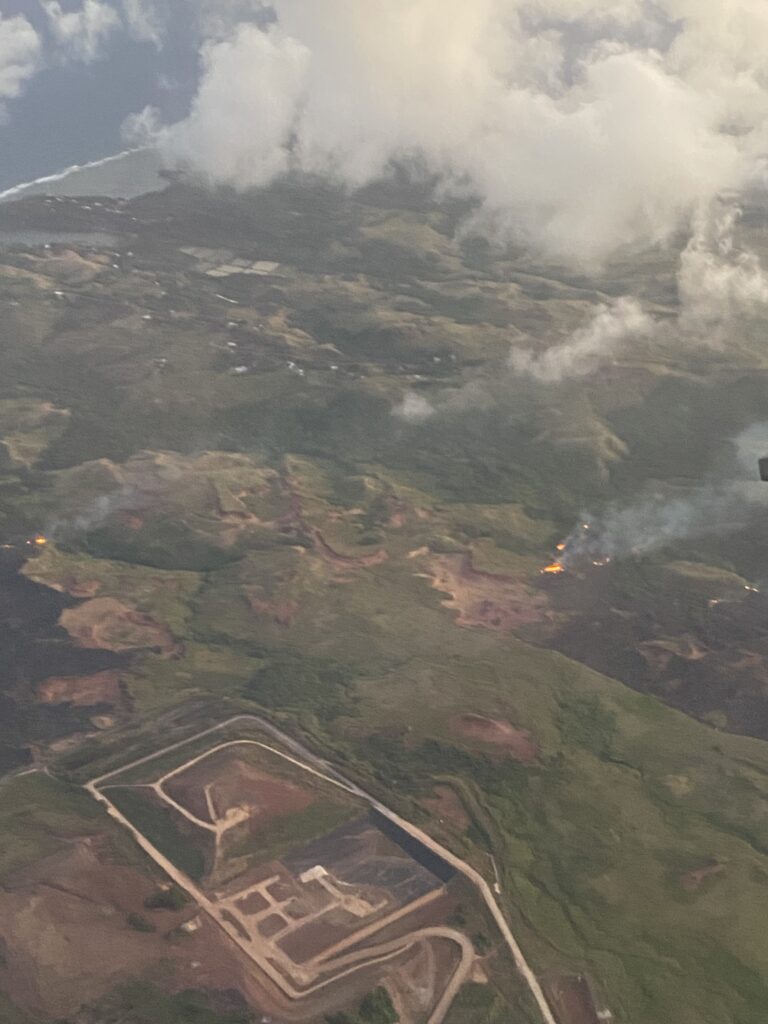
View only this post Read Less



